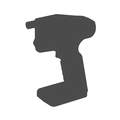Cinnamon Spice in Culture and Cocktails
Cinnamon is an evergreen tree from the laurel family native to Eastern Asia. The tree has oval leaves and berry fruit, but it's the bark everyone clamours for. Cinnamon bark is cultivated by growing the tree for two or three years before cutting it back (coppicing it) to the stem at ground level. The new shoots hold the spicy flavour we use for so many things. The outer bark is removed to reveal an inner layer called Cinnamomum. This layer is full of resin and wet to touch when harvested. It is rolled into long quills around half a millimetre thick and dried in the sun for four to six hours before being sliced into small logs for international commerce.
Cinnamomum Verum, or 'true cinnamon’, is native to India, Sri Lanka, Bangladesh, and Myanmar. But the similar Cinnamomum cassia (cassia) is native to China. And there are several related species, all harvested and sold as cinnamon, native to Vietnam and Indonesia. Global production has multiplied more than ten-fold since 1970.

The Flavours and Uses of Cinnamon
Cinnamon spice has been used as an ingredient throughout history, with records dating back as far as Ancient Egypt, when it was used in the mummy embalming process. It became so rare and valuable that it was regarded as a gift fit for kings and was priced higher than gold.
Cinnamon has become synonymous with Halloween and Christmas in the UK but is used as a flavouring agent throughout the year in our allies' kitchens. For example, America and Europe both have cinnamon sweets, baked goods and breakfasts throughout the year. In the East, it is a multipurpose spice found in savoury dishes like curries, tagines and teas, as well as desserts. It's a core ingredient of Mexican chocolate, perhaps because their Hispanic invaders were the dominant world spice traders in the 1500s.
You can use Cinnamon flavours by distilling the bark, extracting essential oils, steeping the bark in absorbent materials like sugar or grinding it to make cinnamon powder. Cinnamon extracts are used in perfume, drugs, liqueurs and food, and the powder is standard in domestic kitchen spice cabinets around the world.
The distinct smell and flavour of cinnamon are due to the oils, which are very high in the compound cinnamaldehyde. Not just a spice, though; cinnamon is considered a super-food. It has been prized for its medicinal properties for thousands of years, and recent studies have proved that this cinnamaldehyde compound is an antioxidant, has anti-inflammatory properties and can lower blood sugar and improve insulin resistance.
Cinnamon in Cocktails
Cinnamon is commercially used in a blend to spice rum and American whiskey or as an ingredient in schnapps like Goldschläger. It's also used to infuse vodkas, tequilas and fruit brandies.
Like ginger, cinnamon crosses the sweet, savoury divide and will suit your before and after dinner drinkers. Due to the resilience of the bark, it's also great steeped in hot drinks or mixed with sugar for cold cocktails. The stability also helps bartenders infuse cinnamon in bitters, syrups and tinctures of their own.
Cinnamon Ingredients To Try in Cocktails
- Sujeonggwa: a Korean cinnamon punch made by boiling cinnamon, ginger and persimmon. Boil a litre of water with 35 grams of cinnamon sticks, 50 grams of ginger and 75 grams of sugar. Boil the spices and water for 40 minutes, slowly reducing it. Add the sugar and leave to cool. Garnish with dried persimmon.
- Mexican hot chocolate: Melt a tablilla (tablet) of Mexican chocolate — a grainy, dark chocolate sweetened with sugar and spiced with cinnamon — with milk over a stove. Froth by hand with a wooden molinillo (whisk).
- Cinnamon sugar: Mix two tablespoons of cinnamon powder for every 75 grams of sugar and store in a sealed container.
- Cinnamon coffee: In a filter paper, add one teaspoon of cinnamon powder for every portion of coffee you are making (e.g. six for a six-cup pot). Run as usual through an electric coffee filter machine.
- Cinnamon butter: Mix 75 grams of butter with 20 millilitres of runny honey, one teaspoon of ground cinnamon and a pinch of salt until the ingredients are spread evenly. Store in the fridge.
- Cinnamon simple syrup: Add 150 millilitres of water to 150 grams of unprocessed granulated sugar to a lidded pan. Turn the heat to low, so the water doesn't boil, and add four cinnamon sticks, cover and warm for five minutes. Take it off the heat and let it stand for 6-8 hours. Filter into a steri le bottle and keep for up to two weeks.
- Chai tea: Chai is a combination of black tea, spices, and milk. Heat two mugs of milk in a saucepan over a very low heat. Add 6-8 teaspoons of black tea into the pan, 6 cracked cardamom pods, half a cinnamon stick, a grating of nutmeg and 2 cloves. Sweeten to taste and leave it to infuse for 10 minutes and serve.
- Cinnamon honey water: Boil 75 millilitres of water with one stick of cinnamon and one tablespoon of runny honey. Wait to cool, then filter and store in a sterile bottle.
Also Read: Why is nutmeg used in so many classic cocktails

We are celebrating all things cinnamon to commemorate the release of our new cinnamon flavour aromatic. Let us know on Instagram if you've used it in your recipes by tagging us in your posts @TheFlavourBlaster!
















